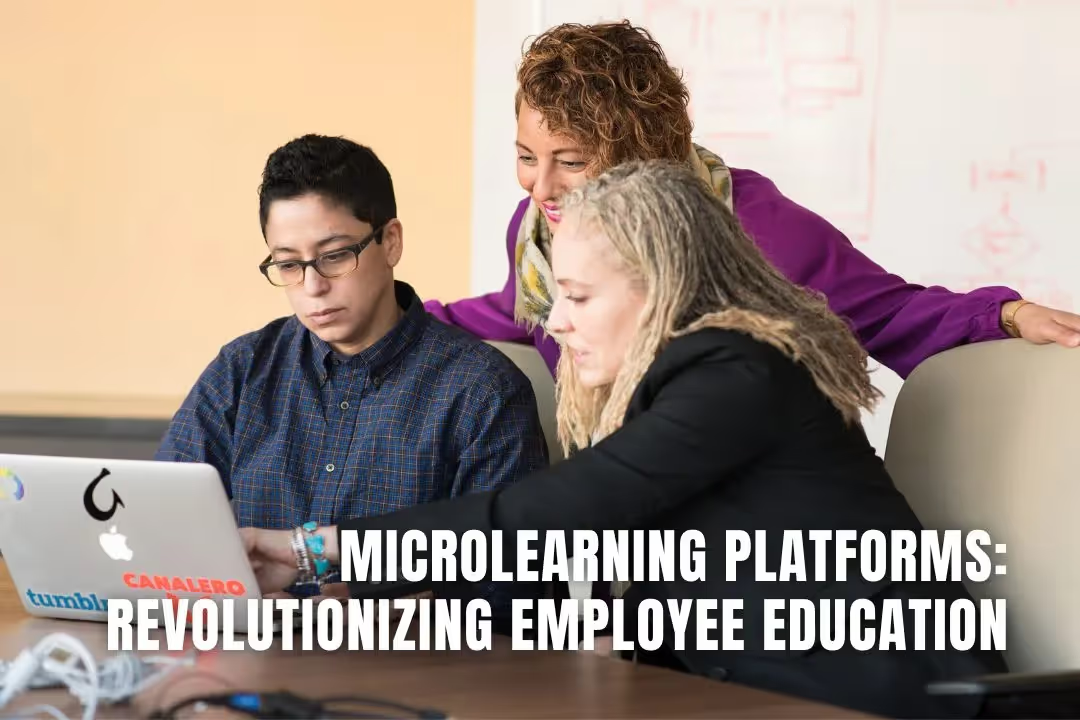
Editorial Disclaimer
This content is published for general information and editorial purposes only. It does not constitute financial, investment, or legal advice, nor should it be relied upon as such. Any mention of companies, platforms, or services does not imply endorsement or recommendation. We are not affiliated with, nor do we accept responsibility for, any third-party entities referenced. Financial markets and company circumstances can change rapidly. Readers should perform their own independent research and seek professional advice before making any financial or investment decisions.
Gone are the days when employee education meant long hours in conference rooms, with traditional, often monotonous training sessions. Enter microlearning, a vibrant and innovative approach to professional development. This strategy hinges on delivering bite-sized educational content, honed to convey key concepts in a manner that is not just succinct but also highly engaging. It's a response to a growing need in the workplace: training that is not only effective but also fits into the rapid rhythm and varying schedules of modern employees.
Microlearning platforms stand at the forefront of this shift, offering a fresh perspective on how knowledge is imparted in the corporate arena. As we delve into the intricacies of these platforms, we uncover how they are not just changing the face of employee education but are also redefining it for a new era of learners.
The genesis of microlearning platforms can be traced back to the evolution of digital technology and its impact on traditional learning methods. In the past, employee training often involved extensive, time-consuming sessions that could overwhelm learners. However, with the digital era came the opportunity for more flexible, engaging, and personalised learning experiences.
Microlearning platforms emerged as a response to the need for more efficient and effective learning methods in the corporate world. They offer a way to disseminate information in manageable chunks, making it easier for employees to absorb and retain knowledge. This approach aligns with the modern workforce's preference for on-demand, targeted information that can be accessed anytime and anywhere.
Microlearning platforms have distinct characteristics that set them apart in the landscape of employee education. These features combine to create a unique learning experience that is both impactful and adaptable to the needs of today’s workforce.
Central to microlearning is its format of breaking down complex subjects into smaller, more manageable units. Each microlearning module typically spans just a few minutes, focusing on a single learning objective. This approach makes it easier for learners to absorb and remember information, turning daunting topics into digestible chunks.
To capture and retain the learner’s attention, these platforms utilise a variety of engaging formats. This could include short videos, interactive graphics, quick quizzes, and even gamified elements. The use of multimedia not only makes the learning process more enjoyable but also caters to different learning styles, enhancing the overall effectiveness of the training.
In today’s mobile-first world, microlearning platforms are designed for on-the-go accessibility. Most platforms are optimised for various devices, especially smartphones, enabling learners to engage with content anytime and anywhere, be it during a commute or in between meetings. This flexibility is crucial for fitting learning into busy schedules.
Leveraging data analytics and adaptive learning technologies, these platforms offer personalised learning paths. They can adjust content based on an individual’s performance, preferences, and learning pace. This tailored approach ensures that each learner gets the most out of the experience, focusing on areas that require the most attention.
Interestingly, the principles of microlearning can be applied beyond employee training. For example, in higher education, microlearning techniques can be instrumental in strategies on how to increase student enrollment in college. By offering prospective students a taste of the educational experience through microlearning modules – showcasing course highlights, skills they will gain, and the flexibility of learning – colleges can effectively engage and attract a wider range of applicants. This innovative approach can resonate particularly well with the digital-savvy generation, making higher education more accessible and appealing.
The adoption of microlearning platforms in employee education brings a plethora of advantages that align with both organisational goals and employee preferences. This multifaceted approach to learning offers benefits that are hard to ignore in the context of modern workplace dynamics.
As we reflect on the transformative impact of microlearning platforms in the realm of employee education, it's evident that we are witnessing a significant shift in how professional development is approached and delivered. Microlearning is not merely a fleeting trend, but a paradigm shift towards more efficient, engaging, and learner-centric education methods. It aligns perfectly with the evolving needs of a modern workforce that values flexibility, immediacy, and practicality in learning.
The future of workplace learning, with microlearning at its core, promises a landscape where continuous professional growth is not just encouraged but seamlessly integrated into the daily fabric of working life. Embracing this innovative approach is key for organisations aiming to foster a culture of continuous learning and adaptability in an ever-changing business world.
Gone are the days when employee education meant long hours in conference rooms, with traditional, often monotonous training sessions. Enter microlearning, a vibrant and innovative approach to professional development. This strategy hinges on delivering bite-sized educational content, honed to convey key concepts in a manner that is not just succinct but also highly engaging. It's a response to a growing need in the workplace: training that is not only effective but also fits into the rapid rhythm and varying schedules of modern employees.
Microlearning platforms stand at the forefront of this shift, offering a fresh perspective on how knowledge is imparted in the corporate arena. As we delve into the intricacies of these platforms, we uncover how they are not just changing the face of employee education but are also redefining it for a new era of learners.